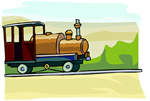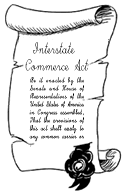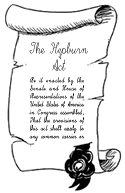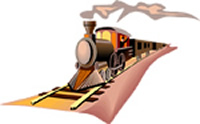
Grades 9-12

Don't have an account yet? Sign up for free
Don't have an account yet? Sign up for free


Between the Civil War and World War II, railroads were one of the nation’s most important businesses and an integral part of people’s lives. In this lesson, students assume the role of detectives investigating why the rail companies experienced a crisis in the 1960s and what helped the freight transport portion of the business return to profitability later in the same century. Students analyze a set of clues that help them explore the impact of government policies and changes in consumer demand on rail service. They discover that government policies (e.g., regulations, subsidies, and taxes) can have both positive and negative consequences in the marketplace. An interactive activity helps students understand that rail service competes in two different markets—passenger service and hauling freight. Students also learn that railroads and government policies have had to adjust as the transportation industry changed in the second half of the twentieth century.
Get the students' attention by playing this sound clip of a train boarding call provided by the Pacific Southwest Railway Museum.
Ask students:

Tell students that from the Civil War to World War II, most people and goods in the United States traveled by rail. They are going to become detectives trying to find out why this is no longer true.
Just for fun, play this final boarding call provided by the Pacific Southwest Railway Museum .
Students are encouraged to use these web pages as they gather their clues.
 Have students work in teams of 2-4 students at computers reading the background information, doing the interactive activities, and completing their worksheets. Look at the process in the student version to see what they will be doing throughout this lesson.
Have students work in teams of 2-4 students at computers reading the background information, doing the interactive activities, and completing their worksheets. Look at the process in the student version to see what they will be doing throughout this lesson.
When students have completed their worksheets, get their attention by playing this short sound clip of a steam engine from the Pacific Southwest Railway Museum . Project the visual that identifies conditions when markets work best.
Discuss:
Clues #1 & 3: Government policies such as business regulation often yield a combination of benefits and costs. 
Clue #2: The Great Depression compounded the problems of the rail companies.
Clue #4: By the end of World War II, the rail industry had several new competitors.
 Clue #5: Federal support for auto and air travel is given as another reason why the rail industry had financial difficulties and was unable to remain competitive.
Clue #5: Federal support for auto and air travel is given as another reason why the rail industry had financial difficulties and was unable to remain competitive.
Ask a few students to share their one-sentence summaries of the reasons the rail industry experienced financial difficulties after World War II. If necessary, combine their responses to get a complete summary. [Two elements should be present in their responses: 1) Government policies made it difficult for the rail companies to profitably compete and 2) a change in consumer preferences shifted consumer demand to rail competitors.]
In this case study of the railroad industry, well-intentioned government policies yielded a variety of unintended negative  consequences.
consequences.
What factors may help the railroads return to profitability?
[Any of the following answers are acceptable:
This examination of the rail industry shows us that government policies can have both positive and negative consequences. What implication does this have for policymakers?
[Any and all of these responses are appropriate. Policy makers must:
 Have students:
Have students:
[Note to teachers: The Hepburn Act of 1906 brought bridges, terminals, storage facilities, oil pipelines, and ferries under ICC jurisdiction. The ICCs power was extended to radio, telephone and telegraph companies with the Mann-Elkins Act of 1910. In 1966, the ICC's safety functions were transferred to the Dept. of Transportation when that department was created. The ICC's powers over rates and routes in rails and trucking were curtailed in 1980 by the Staggers Rail Act and Motor Carriers Act. Most ICC control over interstate trucking was abandoned in 1994, and the agency was terminated at the end of 1995. Many of its remaining functions were transferred to the new National Surface Transportation Board.]
Evaluation of student learning is based on completion of the worksheet and classroom discussion. If students work in groups to complete the worksheet, you may also want to assess their group participation. Three rubrics are provided to help you during the evaluation process. Weight and adjust them to meet your specific needs.

Grades 9-12

Marginal Revolution University
Grades 9-12

Grades 9-12

Grades 9-12
